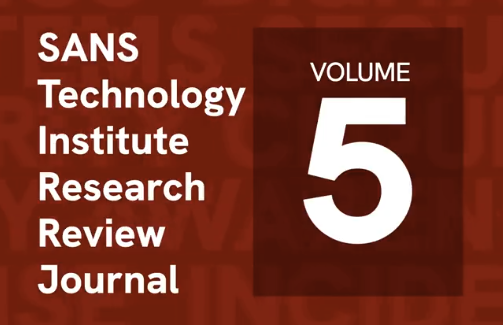Handler on Duty: Johannes Ullrich
Threat Level: green
Podcast Detail
SANS Stormcast Wednesday Mar 12th: Microsoft Patch Tuesday; Apple Patch; Espressif ESP32 Statement
If you are not able to play the podcast using the player below: Use this direct link to the audio file: https://traffic.libsyn.com/securitypodcast/9360.mp3
My Next Class
| Application Security: Securing Web Apps, APIs, and Microservices | Dallas | Dec 1st - Dec 6th 2025 |
| Network Monitoring and Threat Detection In-Depth | Online | Central European Time | Dec 15th - Dec 20th 2025 |
Microsoft Patch Tuesday
Microsoft Patched six already exploited vulnerabilities today. In addition, the patches included a critical patch for Microsoft's DNS server and about 50 additional patches.
https://isc.sans.edu/diary/Microsoft%20Patch%20Tuesday%3A%20March%202025/31756
Apple Updates iOS/macOS
Apple released an update to address a single, already exploited, vulnerability in WebKit. This vulnerability affects iOS, macOS and VisionOS.
https://support.apple.com/en-us/100100
Expressif Response to ESP32 Debug Commands
Expressif released a statement commenting on the recent release of a paper alledging "Backdoors" in ESP32 chipsets. According to Expressif, these commands are debug commands and not reachable directly via Bluetooth.
https://www.espressif.com/en/news/Response_ESP32_Bluetooth
Discussion
New Discussions closed for all Podcasts older than two(2) weeks
Please send your comments to our Contact Form
| Application Security: Securing Web Apps, APIs, and Microservices | Dallas | Dec 1st - Dec 6th 2025 |
| Network Monitoring and Threat Detection In-Depth | Online | Central European Time | Dec 15th - Dec 20th 2025 |
| Application Security: Securing Web Apps, APIs, and Microservices | Orlando | Mar 29th - Apr 3rd 2026 |
| Network Monitoring and Threat Detection In-Depth | Amsterdam | Apr 20th - Apr 25th 2026 |
| Application Security: Securing Web Apps, APIs, and Microservices | San Diego | May 11th - May 16th 2026 |
| Network Monitoring and Threat Detection In-Depth | Online | Arabian Standard Time | Jun 20th - Jun 25th 2026 |
| Network Monitoring and Threat Detection In-Depth | Riyadh | Jun 20th - Jun 25th 2026 |
| Application Security: Securing Web Apps, APIs, and Microservices | Washington | Jul 13th - Jul 18th 2026 |
Podcast Transcript
Hello and welcome to the Wednesday, March 12, 2025 edition of the Sands and the Storm Center's Stormcast. My name is Johannes Ullrich and today I'm recording from Jacksonville, Florida. Well, today we do have a Patch Tuesday, of course, but it's an interesting one. And I don't just want to call it the Microsoft Patch Tuesday. We got, and I'll leave this a little bit sort of as a cliffhanger for later, another company that released an interesting update today. Microsoft did release an update for actually less vulnerabilities than normal. A little bit more than 50 vulnerabilities were addressed in Microsoft's update. But what made it interesting again was six of these vulnerabilities, which may be a record, I haven't really looked back, are already being exploited. So let's talk a little bit about the already exploited vulnerabilities. Well, when we talk about these exploit vulnerabilities, they're heavy on file system issues. Now, none of the exploit vulnerabilities are critical. They're all important. The file system issues, there are three of them related to NTFS and one of them related to FAT. One of the NTFS vulnerabilities and one of the FAT vulnerabilities will lead to code execution. Microsoft labels them as remote code execution. So how would an exploit work here? In order to trigger the exploit, a corrupt file system has to be mounted to the victim's system. There are really two ways to do it. First of all, just trick the victim into opening a VHD file. VHD files would be these virtual hard drive files that would then take advantage of these vulnerabilities. But an attacker could also do it remotely if they have some kind of access to the system, some remote shell, something like this. And then they could upload that VHD file and mount it. So that's why they're classified as a remote code execution vulnerability. Exploitation is certainly not super easy and something that needs basically some additional tricks, which is why these vulnerabilities are only rated as important and not as critical. The other two vulnerabilities are security feature bypass in Microsoft Management Console. Typically, that means, well, some kind of warning that a file was downloaded or such is not being displayed properly. And then we have an elevation of bridge vulnerability in the Win32 kernel subsystem. So overall, these are, I think, sort of average vulnerabilities. But again, remember, they're already being exploited. But then let's talk a little bit about the critical vulnerabilities. There is one that I actually sort of rated as the most interesting vulnerability in this patch set. And that's code execution vulnerability in the Microsoft Windows DNS service. The reason I consider this interesting is, first of all, well, I like DNS and always think that DNS-related issues should get their attention. In this particular case, exploitation doesn't appear to be really that easy. It does require a dynamic DNS update record, which may or may not be enabled. It doesn't necessarily say in the advisory, but the advisory is pretty terse. Whether or not you need that enabled or whether just sending a packet, even if it's not enabled, will trigger a vulnerability. But my bet is if you don't have dynamic DNS updates enabled, then it probably won't work. Now, where you typically do have dynamic DNS updates enabled would be for some internal name server. The other issue here that Microsoft points out is that it's a timing vulnerability. And the attack has to be sent just at the right time. They, of course, don't tell us what that time is. But it's very likely that this depends on other DNS traffic. So it's not just when you're sending it, but also you have to know that some other update request or something like this has just been sent in order for you to trigger the vulnerability. Of course, an attacker could always just sort of flood the exploit and see if it works. But an exploit is likely not going to be sort of 100% reliable here. Other critical vulnerabilities being addressed are one in Microsoft Office and then one in the Windows subsystem for Linux. Not terribly exciting, but probably these are the ones that are actually among all of these vulnerabilities that you're going to see exploited. In particular, the Office vulnerability. And then we got the interesting bonus vulnerability. And that's this time Apple. Apple actually, in the afternoon, released an update for iOS, macOS, and visionOS fixing a single vulnerability, a webkit vulnerability that's already being exploited. This is actually a vulnerability state that they sort of addressed in iOS 17.2, but I guess didn't address it completely. So there's an additional fix for this issue. It only appears to be exploited so far in highly targeted attacks against iOS 17. Apply the patch. Definitely something that you want to take care of. But overall, probably not something we'll see sort of a public exploit for anytime soon. It would be triggered by the victim opening a web page. And then the malicious code would actually be able to break out of the Safari sandbox, which is a big deal and makes that worse than other Safari or webkit vulnerabilities. And then we got a statement from Expressive about the backdoors slash debug commands that were found in the ESP32 chipset. Well, they confirmed the commands exist. They also confirmed that these are debug commands. And they specifically state, and that was the part that I found a little bit difficult to read sort of between the lines in the original release about these vulnerabilities, that these commands are not executable via Bluetooth. So you have to already have access to chipset in order to use these commands. And as such, they don't really consider this vulnerability. I tend to agree with them. They will still release a patch in order to disable these debug commands because, well, a normal user just doesn't need them. And there is definitely sort of a small residual risk here that they could be used against the user. Well, that's it for today. So thanks for listening. Thanks for liking, subscribing. Did you know that Alexa also offers this podcast as part of its flash briefing? And if you ever run into anybody from SANS, well, tell them about how much you like this podcast. Thanks, and talk to you again tomorrow. Bye.











